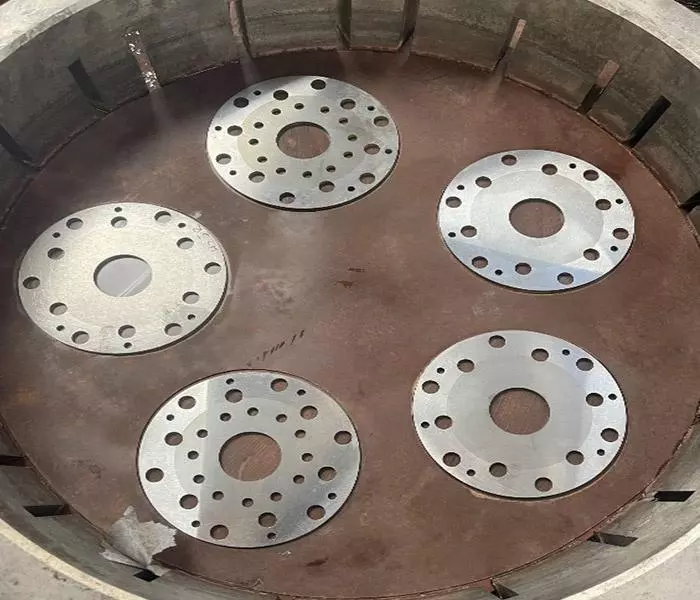Work Holding Methods
In precision manufacturing, work holding is a critical factor for achieving accurate and repeatable results. This is especially true for lapping operations where even slight deviations in part positioning can have significant impacts on the final product's flatness and quality.
Work holding is a critical factor in achieving accurate and repeatable results in lapping operations. Nest type work holders, self-adhesive non-skid discs, and special work holding fixtures are commonly used methods. The choice of work holding method depends on the complexity of the part, height variations, and budget. Careful consideration should be given to choosing the appropriate method to ensure high-quality lapping results.
Nest Type Work Holder
The nest type work holder is the most common method used in lapping operations. It consists of a metal or plastic disc slightly smaller than the conditioning ring's inside diameter. The disc can have one or more holes cut into it to fit the part's shape, but the holes should be towards the disc's outside, leaving the centre clear. Small feet are attached to the disc's face to prevent it from running directly on the lap surface.
To use this method, the part is placed on the disc, which is then located within the control ring. Pressure is applied to the parts being lapped, but it must not be heavy enough to distort the parts. A felt pad can be used between the parts and the weight to compensate for height variations between parts, but no more than 2mm should be allowed.
Advantages:
- It is a simple and cost-effective method of holding work.
- It allows for easy part positioning and removal.
Self-Adhesive Non-Skid Disc Method:
The Self-Adhesive Non-Skid Disc method involves using a Self-Adhesive Non-Skid Disc to face the weight, which is available in sets of three. The faced weight is then placed on top of the work within the conditioning ring. Unlike other methods, no nest work holder is required as the part is held in position using the non-skid facing. This method is gaining popularity in recent years due to its efficiency and effectiveness.
One of the advantages of the Self-Adhesive Non-Skid Disc method is that it is a faster and cleaner method than using felt pads. This method does not produce dust and fibres that can interfere with the lapping or polishing process. Additionally, it allows for easy part positioning and removal, which reduces the chances of damaging the workpiece during the process.
Another advantage of the Self-Adhesive Non-Skid Disc method is that it can compensate for up to 1mm part thickness variations. This means that even if the workpiece has minor thickness variations, the method can still hold it in place and maintain the required precision during the lapping or polishing process.
Special Work Holding Fixtures:
On complicated parts, special work holding fixtures may be required. These fixtures are custom-made and designed to hold parts securely and accurately during lapping.
Advantages:
- It allows for accurate and repeatable positioning of complex parts.
- It can compensate for significant height variations.
- It can hold three or more parts simultaneously.
Limitations:
- It is a more expensive method than nest type work holders or non-skid disc method.
- It requires custom design and fabrication.
Points to Consider for Special Work Holding Fixtures:
- The weight of the fixture should be balanced when holding the parts.
- Ideally, three or more parts should be held in the fixture.
- Height setting blocks can be helpful when assembling parts into the fixture.
- For round or similar shapes, a 'V' type location should be used instead of a hole in a block.
- The fixture should be a loose fit within the conditioning ring, so it is free-floating on the lapping plate.


